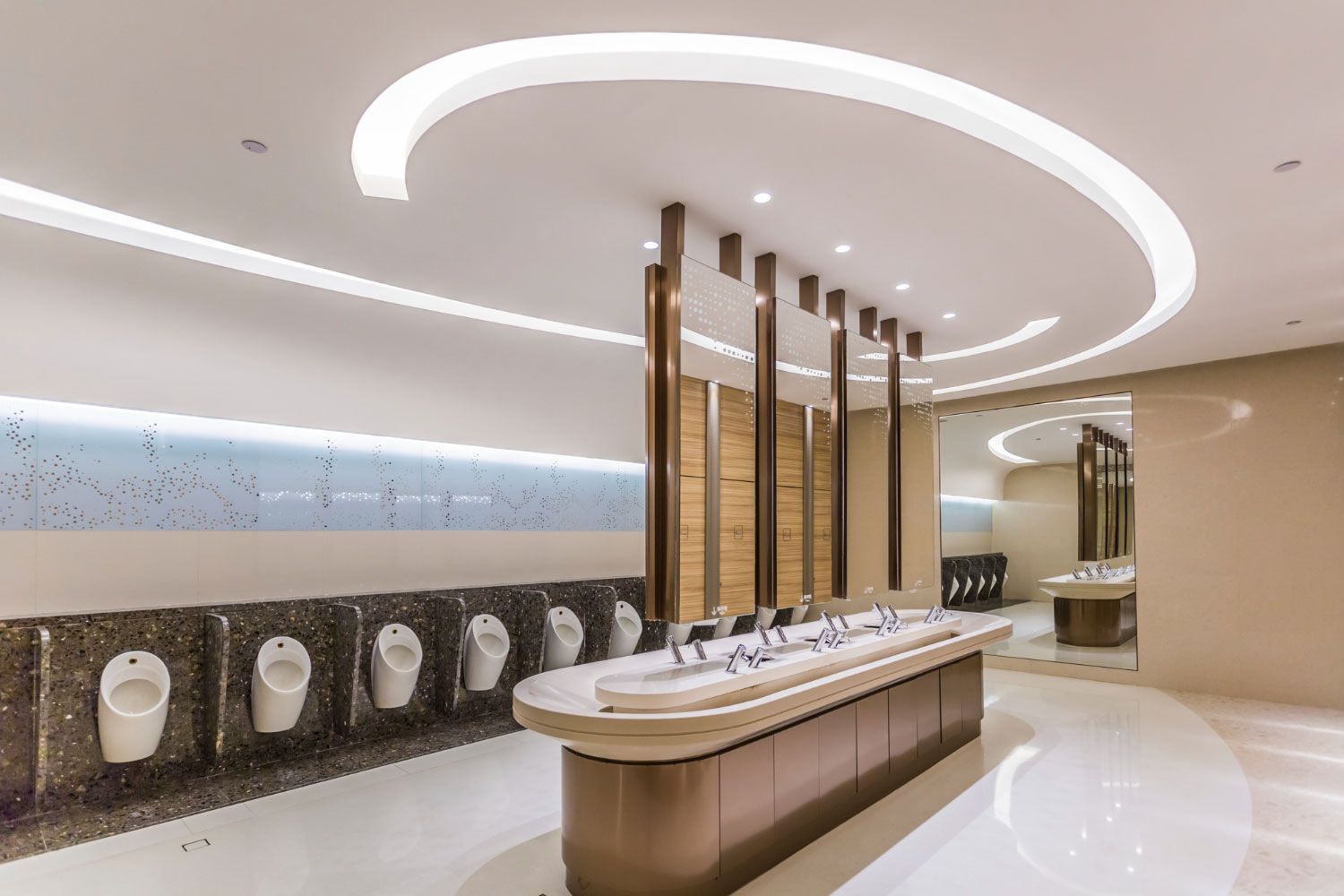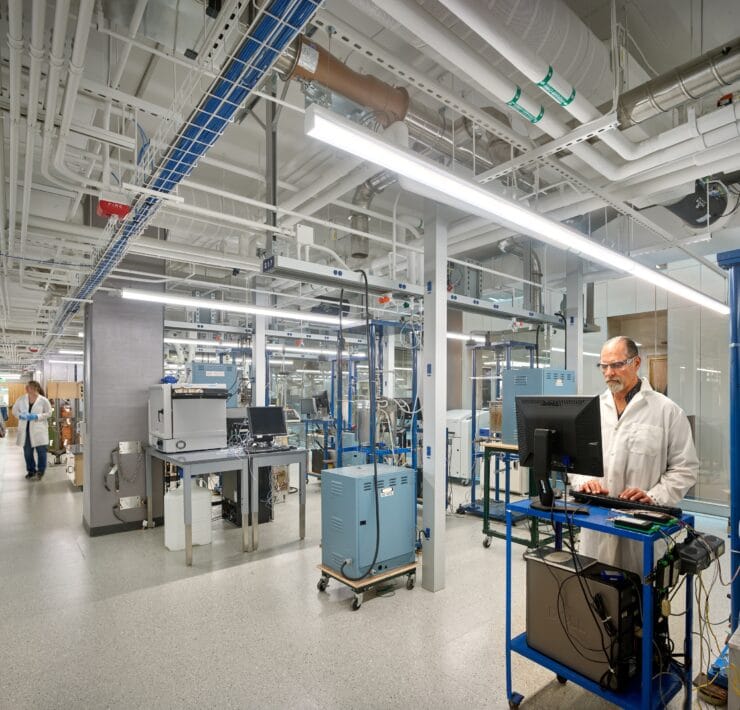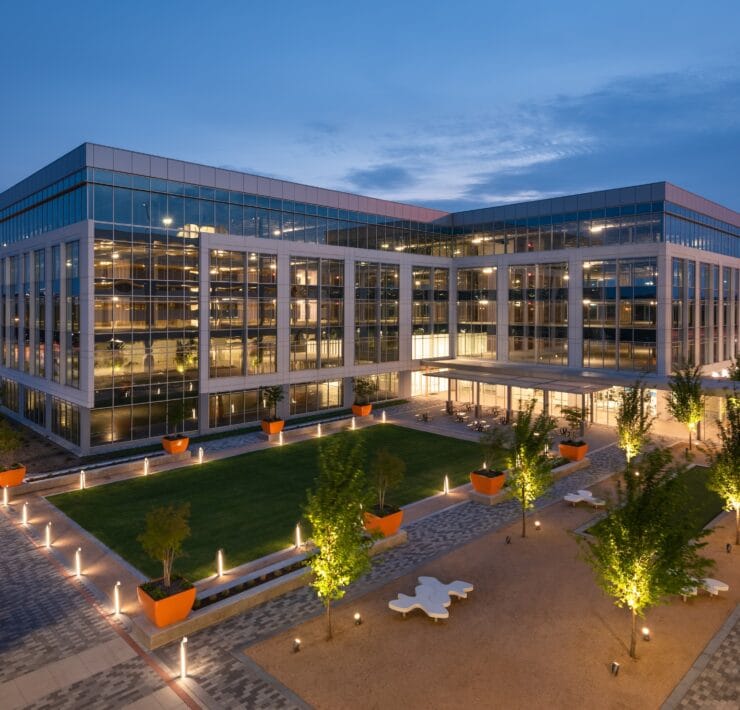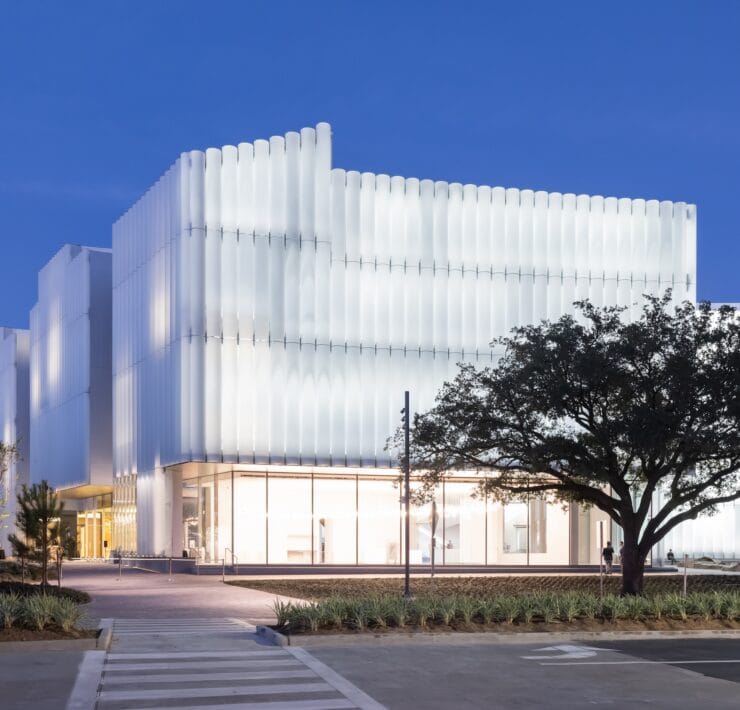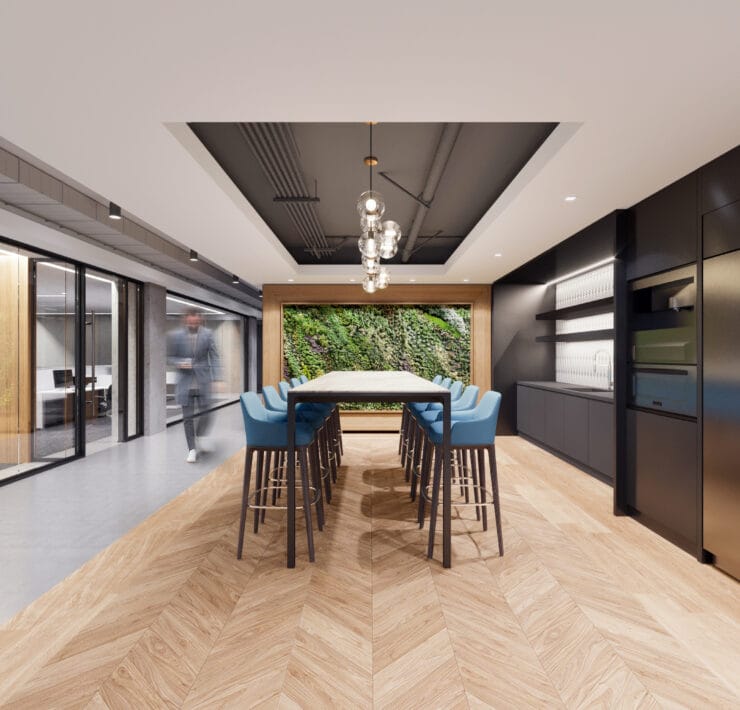Ideally, from a design perspective, the restroom is not an afterthought. Restrooms are crucial spaces for utility, relaxation and rejuvenation in daily routines. Whether designing the restroom for a commercial, public, spa or residential environment, functional lighting is vital for inculcating a pleasant experience within a structure or building.
Lighting concepts and fixture selections depend on the mood you are trying to induce. General restroom lighting principles can apply to these variations. While all layers of light (ambient, accent, task, decorative) are important for lighting a restroom, providing proper illumination for various washroom tasks is always important. Good restroom lighting can transform an austere space into a distinctive environment. An ideal restroom feels warm and inviting and provides sufficient light for washing, grooming, applying makeup, bathing or use of a water closet. To begin designing restroom lighting, it is important to first understand the regulations regarding energy efficiency, which also improve how a space is used.

Table of contents
Energy efficiency regulations for restrooms
Energy regulations were enacted to save electricity and may also save money. National U.S.standards such as the IECC and ASHRAE/ANSI/IES, are referenced to form energy regulations for each state, which can be more stringent, such as California’s restrictive Title 24.
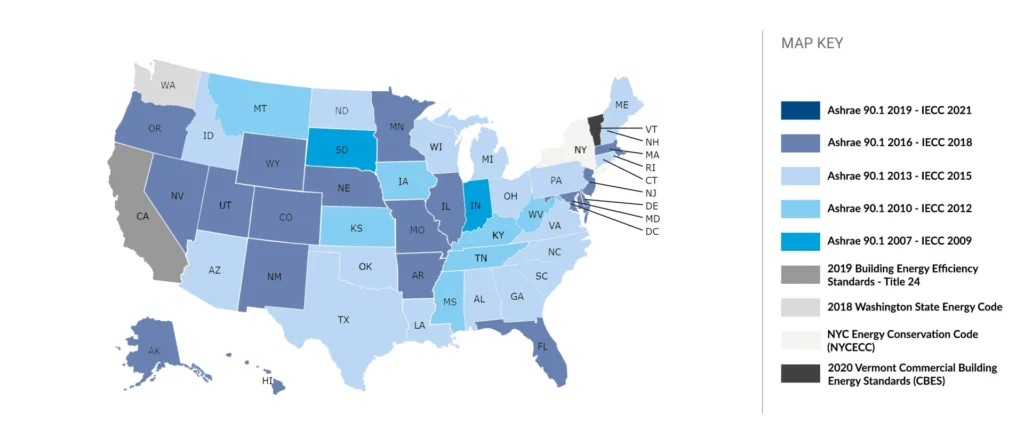
Occupancy sensors are designed to turn on and off as intended, based on active use of a given space, in order to save energy. The mandate may result in lights which prove convenient for persons using a space. The U.S. government now requires all new commercial projects in the U.S. to install occupancy sensors in restrooms that automatically turn off all lights after 20 minutes or less when the space is sensed by the sensor as being unoccupied. The IECC standard requires the use of automatic partial-on controls (of no more than 50 percent lighting power) when a person enters a commercial restroom space, which is also permitted under Title 24.
Both the IECC and Title 24 require full on and off manual switches for commercial restrooms. However, the IECC allows full automatic-on controls with no manual control for restroom spaces where manual operation could endanger safety, such as in a healthcare environment. Title 24 allows restrooms with two or more stalls to use manual controls that are not accessible to unauthorized personnel, such as in office or public spaces. (Energy regulations for lighting controls referenced from IECC, Rayzeek, and Title 24.)
Energy-efficient lights can be useful for any new construction or renovation project. This apploies to the restroom, too. Lighting power allowance (LPA) measures the amount of energy (in watts) allowed for a given type of space, based on square footage. Under California’s Title 24, commercial restrooms are allowed 0.60 watts per square foot. This LPA is the benchmark for any non-residential restroom space, as most other LPA for restrooms do not allow much more energy to be used (IECC, table C405.3.2). To meet these government-mandated energy standards, LED lighting makes sense. Following these guidelines enables significant energy savings for any commercial restroom.

How light forms a restroom space
The quality and application of light for any restroom infuses the atmosphere of a space and provides functional lighting for intended tasks. Washrooms are people-oriented spaces where accurately seeing color is important. Color Rendering Index (CRI) is the metric used to accurately measure how a light source illuminates an object’s color. Any restroom should use high CRI (90+) light sources, while applications such as residential or hospitality spaces benefit from using very high CRI (95+) light sources. High CRI lighting is essential for tasks, such as washing, grooming or applying makeup.
The correlated color temperature (CCT) of restroom lighting is also an important factor that affects one’s mood in a given space. Depending on the intended program type, a slightly warmer or colder color temperature may be preferred for a restroom, but a neutral white target CCT of 3000-3500 Kelvin is best for most commercial applications. For residential, spa or hospitality environments, a warmer CCT of 2700K can be used to provide a warm, relaxing washroom feel. However, restroom applications that require attention and acuity, such as healthcare, may consider up to 4000K lighting.
Restrooms need bright, ambient light as well as properly oriented task lighting. Ambient light levels for restrooms are best set at 10 to 50 footcandles, depending on the restroom type, and 20 footcandles is a dependable, suggested target illuminance (IES). To produce necessary ambient illumination for a restroom, you need to know how many lumens the light fixtures need. Follow this lumens calculator and guide to figure the amount of light a restroom requires.
Sufficiently illuminate restroom walls to make a space feel spacious and comfortable. Damp or wet-rated fixtures may also be a good idea for general restroom lighting, especially on the ceiling, where moisture can accumulate. To achieve intended ambient light levels for a restroom, ceiling surface-mounted and recessed lighting fixtures are great options. Alcon Lighting’s recessed downlights provide options to select the right fixtures for your restroom. Alcon Lighting also offers larger recessed and surface-mounted light panels which provide the feel of a skylight.
Apart from ambient lighting, restrooms integrate different types of tasks, making the flow of a space and the appropriate task illumination a requirement for optimal functionality.
Restroom lighting by task
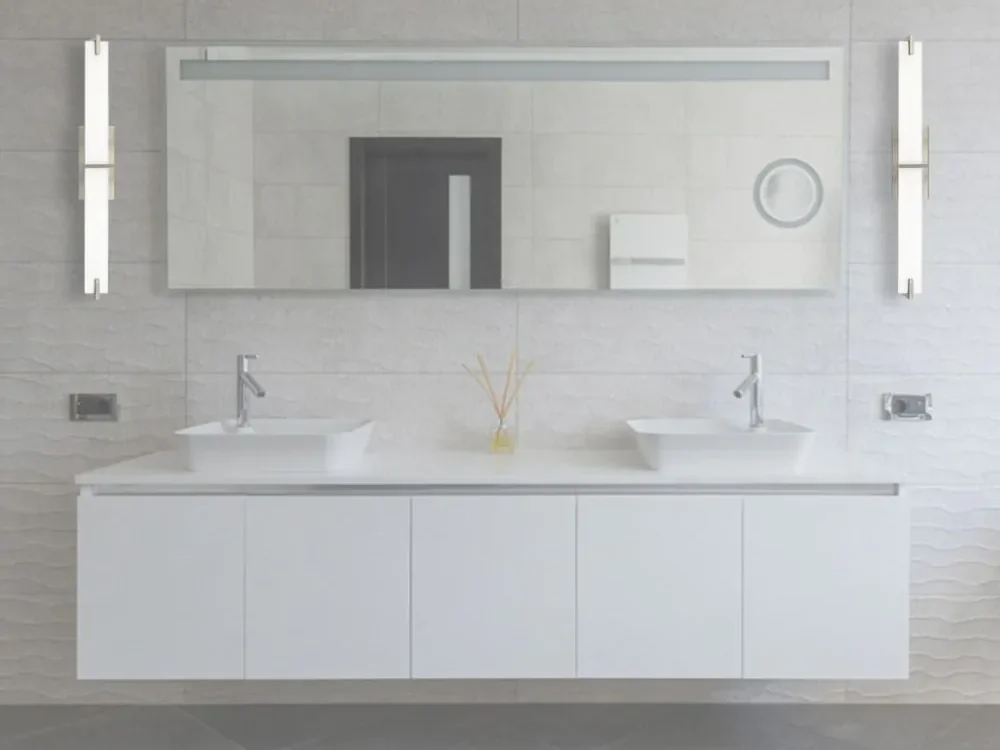
Vanity
Vanity tasks are a primary function of any restroom. Washing, grooming, applying makeup, etc. requires clarity and comfort. Using evenly distributed horizontal illumination around a mirror produces the most comfortable and useful vanity lighting. Vanity lighting can be placed vertically or horizontally around a mirror, though vertical placement on the sides of a mirror produces the best lighting for the human face. This horizontal illumination can be accomplished with direct linear lighting, indirect linear lighting, wall sconces or mirror-integrated lighting. Products such as this vertical vanity sconce provide evenly distributed illumination.

If placing light fixtures around the mirror is not desired, sufficient vanity illumination can also be achieved by placing linear lighting or adjustable downlights in the ceiling, positioned to bounce light off of the mirror and upon the face.

Linear ceiling-mounted light with dropped lenses are able to provide sufficient horizontal illumination for a vanity.

A restroom vanity should target 20 footcandles of illumination at the 3-foot task height, as well as 20 footcandles vertically for the user’s face (IES RP-9-23, page 50). When using direct linear lighting, select light fixtures with diffused lenses to reduce glare and smoothly distribute illumination forvanity. Wet or damp-rated light fixtures are not a requirement for a restroom vanity, but are worth considering to prevent moisture from damaging a fixture.

Shower/Bathtub
The shower or bathtub is an important part of any restroom, and needs to be comfortable and functional. Shower lighting illuminates the body, and ideally is positioned to avoida shadows and glare. It’s also advisable to illuminate shower and bathtub walls. Diffused lighting along the shower wall gives the user a sense that the area feels spacious. Wet-rated light fixtures are needed for the shower area, as water and moisture can infiltrate and damage any fixture. Wet-rated light fixtures provide the necessary seals or gaskets to assure that moisture will not penetrate it.
The light in a shower does not need to be bright, though sufficient light is necessary for washing. Five footcandles of illumination on the floor can properly illuminate a shower or tub, and two footcandles of illumination on walls can suffice. (IES RP-9-23, page 50).Wert-rated recessed downlighting and linear lighting provide the quality of light you need for a shower or bath. Depending on the size of a shower or bath, one or two downlights are usually enough. Position downlights in the shower so that they are offset from the center to light the human body, instead of merely the top of the head.

If you are designing a more spacious shower or bathtub space, linear wall-mounted lighting is an elegant way of providing calm indirect light. Linear surface-mounted fixtures produce even up-light and down-light, with the wet-rated specification. Linear wall-mounted lighting should be positioned in your shower to reduce direct glare. Linear fixtures that also shine light upwards will illuminate your ceiling for a soothing spa-like environment.
Water closet
When water closet spaces are not given lighting design consideration, they can feel dingy. Proper lighting will make a water closet comfortable and functional. Provide lighting from high up to light walls for all-encompassing illumination and reduced glare.
For a restroom water closet, provide 4 footcandles of illumination at the vertical task surface (about 2’ above the floor) and 1.5 footcandles of horizontal illumination against the wall (IES RP-9-23, page 50). Use recessed downlights, ceiling lights, wall-mounted linear lighting, or wall sconces to effectively light a water closet. Typically, a single light fixture per toilet space yields sufficient light. For commercial or public spaces, illuminating multiple stalls with a single linear light fixture is a good strategy. In water closets, place luminaries about 5’ high on the back wall or on the ceiling. Downlights above toilets are best be positioned about 2’ away from the back wall. Note the downlight’s beam angle for appropriate wall illumination.
Ceiling surface-mounted downlights express a different architectural style and can be equally effective. For a modern look, Alcon Lighting also offers ceiling surface-mounted and recessed linear light fixtures. To produce comfortable diffuse light in your water closet, wall-mounted luminaires with indirect light are best. Alcon Lighting’s direct-indirect linear wall-mounted fixtures provide great general and task illumination. Make your water closet an illuminated and relaxed space.
Enhanced restroom lighting
Lighting choices may complement restroom interior design . A restroom can be transformed into a spa environment with the layouts and light fixtures.
Accent lighting and certain decorative features may add a playful sensibility to an otherwise plain or blank space. For example, the wall sconce, such as those featured in this assortment, can accentuate with ambient light. Indirect lighting hidden within wall or ceiling systems affords calming, diffuse light that orients the inhabitant or user. Whether lit from below or above, hidden cove conditions can be modern and chic. Alcon Lighting linear cove lighting products yield elegant illumination within the minimalist architectural style. Cove or hidden indirect linear lighting can be effectively used for wall wash, vanity, shower and water closet lighting.

To give the restroom user personal control, light dimming control enables each individual the ability to adjust the light level as they please. Alcon Lighting’s range of control devices gives the individual the capability to exercise a degree of control over the lighting. For an accent in the restroom, RGBW color-tuning luminaires foster an immersive environment. Using wall sconces adds flare to the design.

Conclusion
General and task lighting is critical for any restroom. Be aware of the contrast ratio between light and darker spaces in your restroom, as illumination on the floor and walls can foster a sense of being clean and comfortable. Select luminaries that fit your design style, and strive for energy efficiency to keep costs under control. Make restroom luminaire specifications with the color rendering and color temperature propertiesyou need. Position light fixtures in the restroom to illuminate tasks without creatingshadows or glare. Gauge for correct light levels to assure you are getting ample light into each restroom space.
Sources:
Electrical Marketplace. IES Recommended Lighting Levels.
IECC. California Energy Code.
IES. Recommended Practice: Lighting Hospitality Spaces, RP-9-23.
Rayzeek. Maximize Energy Efficiency in Restrooms with Occupancy Sensors.
Garrett Rock is a seasoned lighting designer based in San Francisco, California. He earned his bachelor's degree in Interior Design from the University of California, Davis, and a Master's in Architecture from the California College of the Arts. Throughout his career, Garrett has contributed to firms such as Architecture & Light, Banks Landl Lighting Design, Geddes Ulinskas Architects and WSP. He currently serves as a lighting design consultant for Alcon Lighting and a technical writer for Insights, where he specializes in keeping readers current on energy regulations and in human-centric lighting guides for healthcare settings, retail and other commercial applications.

